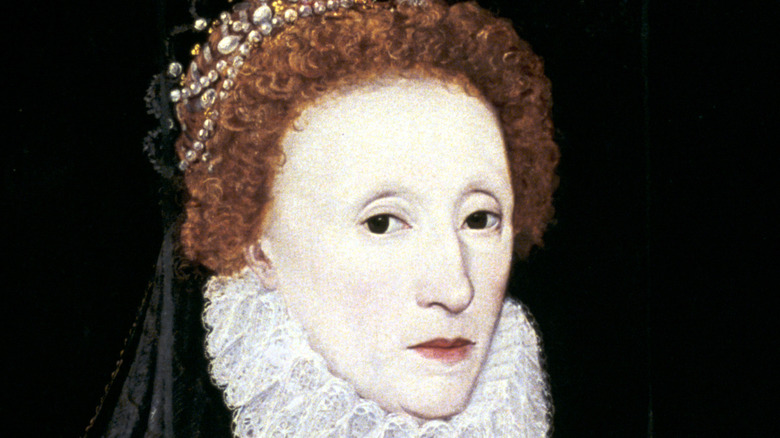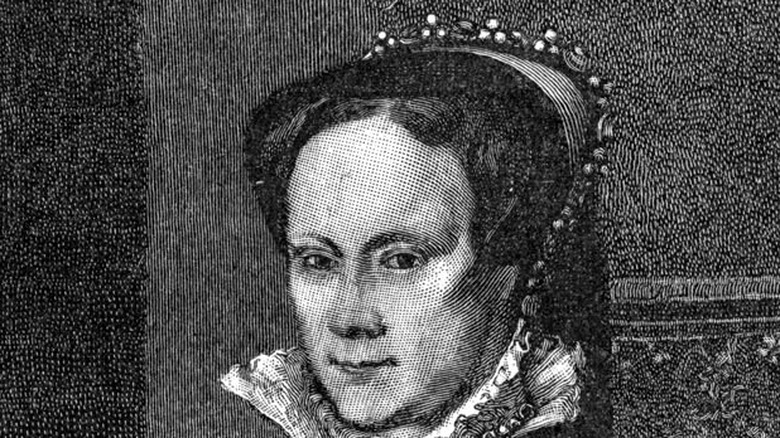Why Queen Elizabeth I Almost Didn't Land On The Throne
The Tudor dynasty was created at the conclusion of the War of the Roses, a massive civil war fought over the English crown between the royal houses of York and Lancaster. Eventually, much of the latter family had been either killed or forced into hiding. Then in 1485 Henry Tudor, a distant Lancastrian relative, returned to England from his residence in France. He defeated King Richard III, married Elizabeth of York, and united their two houses into the Tudors (via History.com). The dynasty lasted until 1603 with the death of Elizabeth I, as without a child or appointed heir the throne was given to the eccentric Scottish King James I.
Elizabeth's tale is in many ways a tragic one; her mother was executed by her father Henry VIII for failing to produce a male heir (officially for treason). Meanwhile, later in life, Elizabeth herself was politically forced to have her once-beloved cousin, Mary Queen of Scots, executed for entanglement in an assassination plot. She is overall regarded as a very effective ruler both politically and militarily, having led England through its stunning victory over the Spanish Armada (via BBC). However, her father's promiscuous quest for a "proper" heir nearly cost Elizabeth the throne altogether.
Elizabeth was almost executed for treason by her half-sister
Elizabeth had many half-siblings from her fathers preferred off-hours activities, some of whom preceded her in the line of succession. The first, Edward VI, held the distinction of England's first monarch to be born a Protestant/Anglican before his death six years later (via Britannica). He wished that his cousin Jane Grey take the throne instead of his elder half-sister, Mary, due to the latter's strong Catholic faith. A mere nine days into Grey's rule, however, Mary gained enough popular support to take the throne and was officially crowned as Queen.
A year later, Mary's rule was threatened by Sir Thomas Wyatt's rebellion. This was a violent backlash to her plan to marry Philip II, as he was a Spanish Catholic while England was a Protestant rival of Spain (via World History Encyclopedia). The rebellion ultimately failed, though and many involved in the plot or suspected to be, including Jane and her husband, were executed. Elizabeth I was temporarily placed in the Tower of London following suspicion of her participation but was spared death after Wyatt's express insistence that she was innocent (via History Learning Site). Four years later, Mary died of natural causes without an heir, finally leaving the throne open to Elizabeth.

